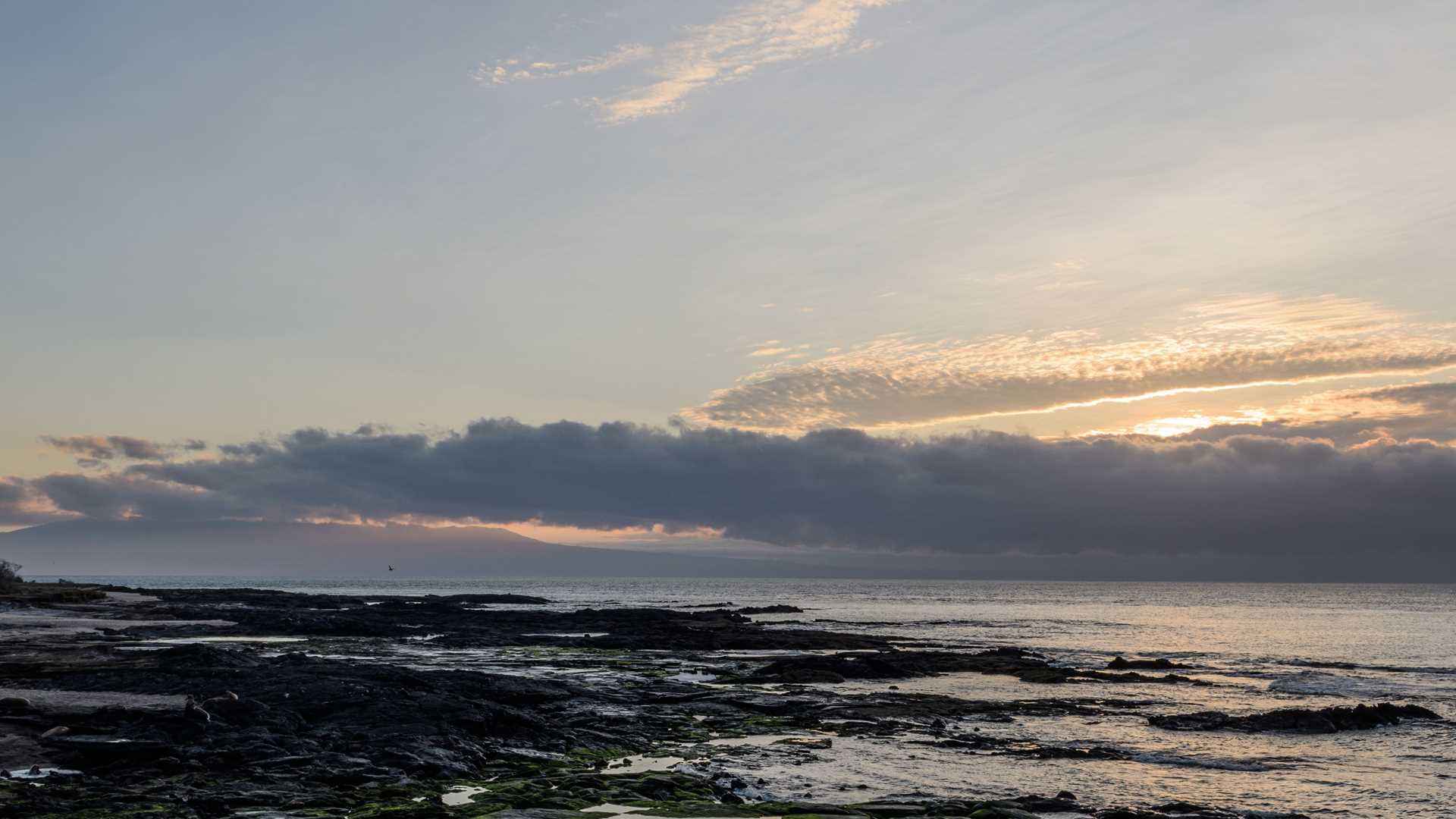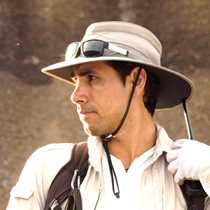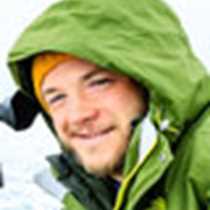With the first light of the morning, the National Geographic Endeavour II anchored at Espumilla Bay located on the northwestern side of James Island. Our guests prepared for an invigorating pre-breakfast hike, kayak excursion, and photography walk. The landscape looked very volcanic at first, but as we got closer, the green halophytic vegetation becomes obvious, creating a very thick strip that isolated the beach with the inland lagoons formed by the tides.
Kayakers explored a good portion of the shoreline, observing the interesting volcanic formations along the way. Hikers entered the buttonwood mangrove forest, visiting tunnel-like passages formed by the intricate roots and trunks of the mangroves. We hiked to an elevated area where we stopped to catch our breath and take a sip of water, as we observed a magnificent view of the shore bathed by gentle waves. Our guests on the photo walk had the great opportunity to learn several tips to improve their photography skills as they walked along the coast looking for seabirds diving to catch the first meal of the day.
In the late morning, the National Geographic Endeavour II repositioned to Buccaneer’s Cove, one the most visited sites in the Galápagos since the 1600s. Pirates, buccaneers, privateers, and whalers frequented this place in search of water, and hunting giant tortoises for food. Charles Darwin visited this very site in 1835 with his assistant Mr. Covington, who helped him document his last collection of birds, reptiles, fish, and plants before they had to set sail to Tahiti. This was the last island visited by the H.M.S Beagle in the Galápagos.
Buccaneer’s Cove is an excellent site for snorkeling, kayaking, and the glass-bottom boat, so we decided to offer it all. Our guests enjoyed snorkeling in this site due to the amount of wildlife and interesting volcanic formations underwater. The kayakers also observed a number of seabirds and sea lions along the shore.
After lunch, the ship repositioned once more to James Bay, and we offered an early afternoon excursion for those who would like to swim, snorkel, and spend time on the beach. Later in the afternoon, the rest of the guests joined the snorkelers and swimmers on the beach to reassemble in groups to visit Puerto Egas. This was an amazing walk along the intertidal and spray zone, every bit of the shore was teeming with life. Galápagos sea lion pups were everywhere. Galápagos fur seals, great blue herons, Sally Lightfoot crabs, marine iguanas, American oystercatchers, and striated herons are some of the species our guests were able to spot as they explored this fantastic site.
We left Puerto Egas after a day full of wildlife and adventure, heading back out to sea to continue our week of exploration.









